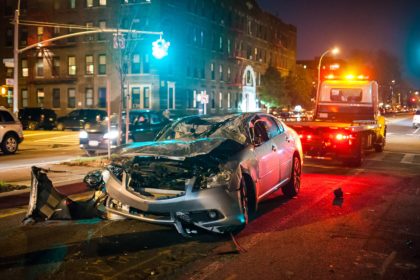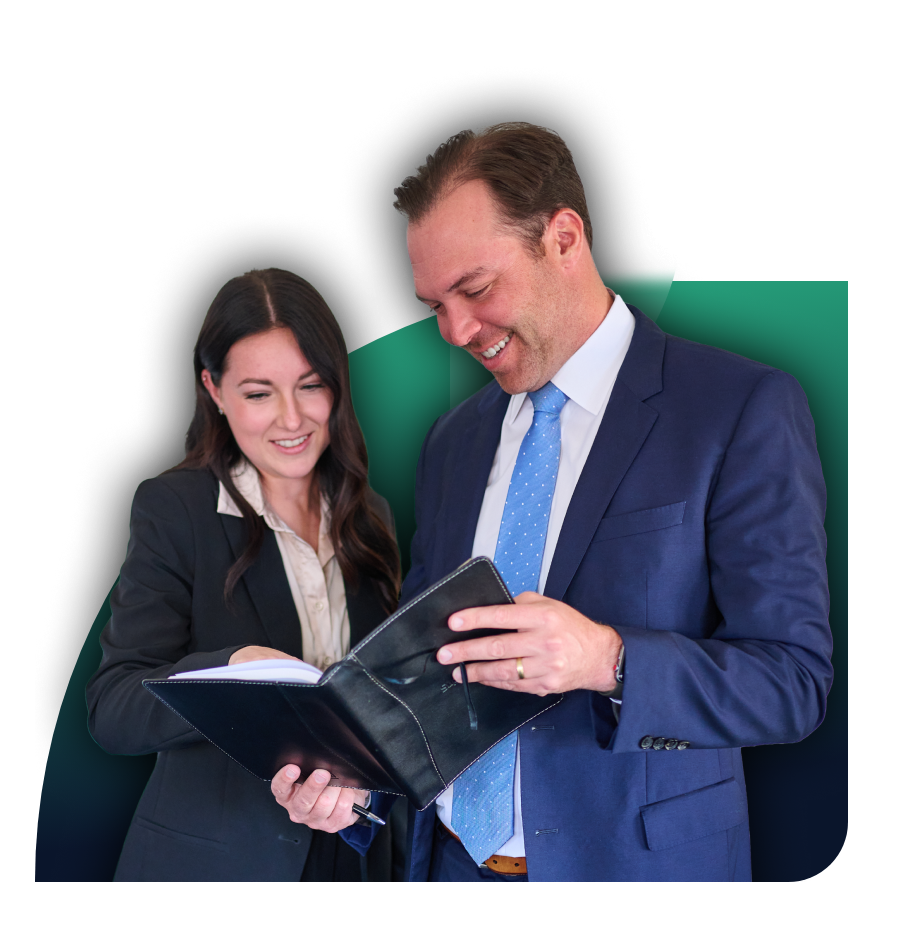How can you tell who hit who in a car accident? Determining which car hit the other in a car accident can prove critical to the resulting insurance claim. The driver who committed the act of negligence that resulted in the accident will generally bear liability for the accident. That driver’s insurance company will typically pay out compensation for the damages associated with the accident based on that driver’s insurance policy. Reach out to a car accident lawyer.
What if No One Admits Liability?
In some cases, however, determining who hit who in a car accident can prove more complicated than anticipated. If neither driver admits liability for the accident, the insurance company may look at the evidence from the accident to determine who bears liability.
Witness Testimony
After an accident, witness testimony can prove critical to establishing what happened that led to the accident. Lawyers and insurance companies may want to talk to witnesses as soon as possible after the accident before their memories fade.
Suppose the witness reviews the accident too many times prior to giving a statement, including going over those conditions in his mind. In that case, it can also alter some of the vital aspects of that memory.
The Drivers Involved in the Accident
The drivers involved in the accident will often each have a chance to make a statement about what they feel led to the accident: what they observed, the conditions on the road, and any external factors. The drivers may have insights into things that no one else on the road would have seen: problems with the vehicle, for example, that may have contributed to the accident.
Each driver may, however, attempt to paint himself in the best light possible while giving that statement. Most drivers do not want to accept liability for an accident. They may make statements trying to push that liability to the other driver or another party.
Passengers in Either Vehicle
Like the drivers, the passengers in the vehicles involved in the accident may feel strongly about putting liability on another party rather than the driver of their vehicle. However, those passengers may note things neither driver reported, allowing them to provide more information and context about the accident. That context can prove essential to laying out what led to the accident and any details involved.
Witnesses Who Saw the Accident
Car accidents often occur in clear view of a number of other people. Those other people may see things neither driver observed at the time of the accident. Furthermore, third-party witnesses often have no stake in the accident claim, which may make their testimony more reliable than testimony from anyone involved in the accident.
However, collecting third-party witness testimony can prove more difficult than getting testimony from the parties directly involved in the accident since many people will not stop when an accident occurs.
Video Footage
In many cases, lawyers and insurance companies may look at the accident’s video footage to get a better idea of what may have contributed to it and, therefore, who likely bears liability for the incident.
Dash Cam Footage
Many drivers install dash cams in their vehicles, which can help provide clear evidence of what may have led to an accident. While a dash cam can only “see” what it points at, it can provide clear insight into the conditions that led to an accident.
For example, it might show the color of the light as the driver of the vehicle with the camera proceeded through an intersection, or it might indicate that the other driver ran a stop sign or merged over without adequate room. All those little details can make a huge difference in an accident claim since they can help clearly display which driver caused the accident.
Traffic Camera Footage
Many traffic cameras temporarily record traffic flow as it moves through the area. Others, however, do not. Many cities also do not store traffic camera footage for an extended period of time, which means that if drivers want to use that evidence to help establish liability for a car accident, they may need to take care of requesting that data soon after the accident.
However, traffic camera footage can prove essential in some accident cases since it provides a bird’s eye view of traffic flow and precisely what likely led to the incident.
Security Camera Footage
Security camera footage can be an essential part of some traffic accident claims. Security cameras may deliberately focus on where the accident occurred, especially in parking lots or parking garages, which can make it much easier to clearly lay out what led to a car accident. In other cases, however, security cameras may only catch part of the accident or may provide time markers that can make it easier to lay out what occurred before and around the time of the accident.
Security camera footage, like traffic camera footage, often gets deleted soon after the accident. You may need to access those records shortly after the accident to make it easier to put together what led to the accident.
The Position of the Vehicles
Often, the position of the vehicles involved in an accident will provide vital insights into what likely led to the accident. For example, in most cases where one car strikes another from behind, it may appear evident that the rear vehicle struck the front vehicle.
Looking at the vehicles’ position may also help establish another potential explanation for the accident. In the case of that clear rear-end collision, seeing both vehicles sit on a sharp hill could show that the front vehicle may have rolled back into the rear one, especially at an intersection.
The position of the vehicles in other types of accidents can also help provide essential clues regarding liability. For example, in a sideswipe collision, the vehicle moving over the line between lanes may be more likely to hit the other vehicle. In a T-bone collision, the vehicle further through the intersection may have had the right of way at the time of the accident.
Taking photos of the accident scene may prove helpful in establishing liability later. Accident scene photos can help take insurance agents and lawyers to the scene of the accident and give them a better idea of what that scene actually looked like.
The Police Report
In many cases, the police report from a car accident will lay out which driver likely caused the accident. Sometimes, the police may notice an obvious feature of the accident scene that makes it apparent who caused the accident.
The officer might, for example, know which driver ran a red light or might have observed the liable driver speeding or growing distracted shortly before the accident. In some cases, the officer that responds to the accident may issue additional citations, including citations for speeding or driving while intoxicated.
The officer might also receive an admission of liability from the driver that caused the accident, which may appear on the police report. In many cases, drivers may accept liability at the time of the accident but later try to backtrack to avoid the cost that may accompany liability for an accident.
If the driver admitted liability at the scene, the officer’s testimony and the report could serve as essential evidence as the injured party aims to recover damages for the incident.
Expert Testimony
In some cases, especially in disputed liability cases, it can prove helpful to have an expert witness come in and look at the evidence from the scene of the accident. Sometimes, police officers may not clearly see who caused the accident, and witness testimony might only offer a vague view of what led to the accident.
Witness testimony can vary from one witness to the next, with each witness noting something slightly different. In the case of traumatic accidents, it can be challenging to get an accurate statement from the people who saw the accident.
Expert witnesses, on the other hand, can work to recreate the accident based on the available information. For example, an expert might take a look at the damage to the two vehicles, any photos of the accident scene, and the scene of the accident itself, then put together a clearer estimate of all the factors that likely contributed to the accident.
Lawyers often bring in experts to testify when it grows increasingly apparent that they do not have enough other evidence to lay out what likely led to the accident. Many lawyers work with teams of expert witnesses regularly.
When Do You Need a Lawyer to Help Establish Liability for an Accident?

If you suffered injuries in a car accident, you might need a lawyer to help you put together your claim, from clearly establishing liability for the accident to helping you lay out the compensation you deserve. In an accident involving minor property damage, the insurance companies may sort things out themselves without needing a lawyer involved. However, you may notice several signs that you need a lawyer to help with your claim, regardless of whether injuries occurred in the accident.
The Liable Party’s Insurance Company Disputes Liability for the Accident
Sometimes, even in the face of clear evidence, the liable driver’s insurance company may refuse to accept liability for the accident. Any time the insurance company disputes liability, having a lawyer on your side can make it much easier to lay out who really caused the accident, including putting together all the evidence related to the accident.
More Than One Factor Contributed to the Accident
Sometimes, you may suspect that more than one factor contributed to your car accident. You may, for example, suspect that a mechanical failure may have contributed to the accident, which might require a deeper investigation. You might have an accident with a driver on the clock at the time of the accident and suspect that the driver’s employer may share liability for the accident, often based on policies or procedures that increase the risk of a devastating collision.
Having a lawyer can prove essential in cases where more than one factor contributed to an accident. A lawyer can help lay out exactly what percentage liability each party bears and give you a better idea of how to proceed with your accident claim, making it easier for you to proceed with the claim.
You Need Help Figuring Out Who or What Caused the Accident
In many cases, you may need to find out exactly what caused a car accident. Accidents frequently occur when you least expect them, with relatively little warning. You may have difficulty laying out the factors that likely contributed to the accident and how they may have impacted the risk.
A lawyer can help make it much easier to lay out the factors that may have contributed to your car accident and what compensation you should expect.
You Have Yet to Hear Back Promptly From the Liable Party’s Insurance Company
Even in car accident claims with clear liability, the liable party’s insurance company may delay getting back to you. The insurance company may, for example, want to prove that someone other than its driver contributed to your accident or may want to simply delay paying for your accident for as long as possible. Having a lawyer can help streamline the claim process.
Contact a Lawyer After Your Car Accident
After a car accident, you can find yourself mired down by accusations that you caused the accident or difficulty dealing with the liable driver’s insurance company. A personal injury lawyer can help you navigate your claim more smoothly and effectively, increasing your ability to clearly establish liability for the accident. Contact an attorney as soon as possible to learn more.


